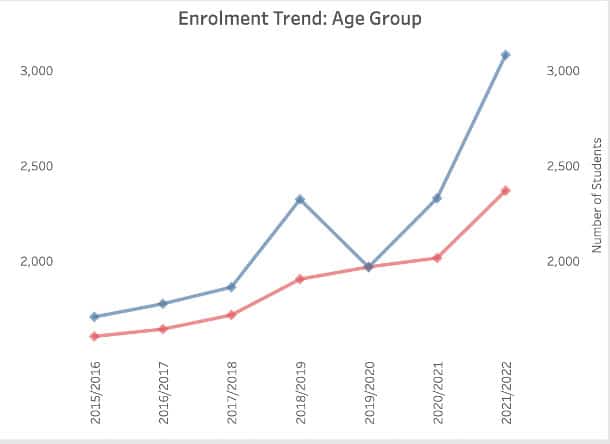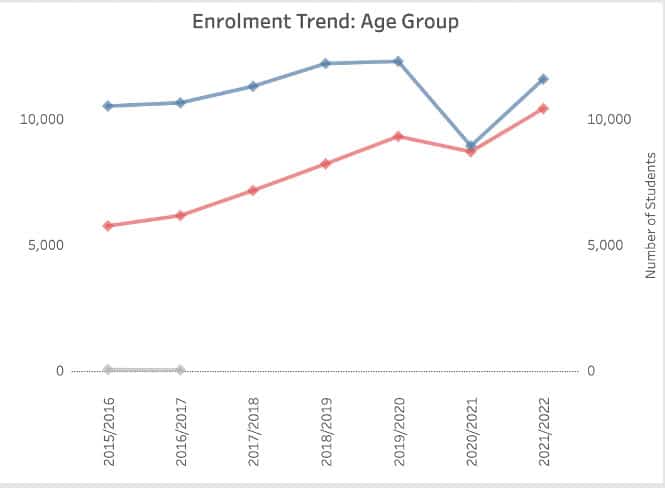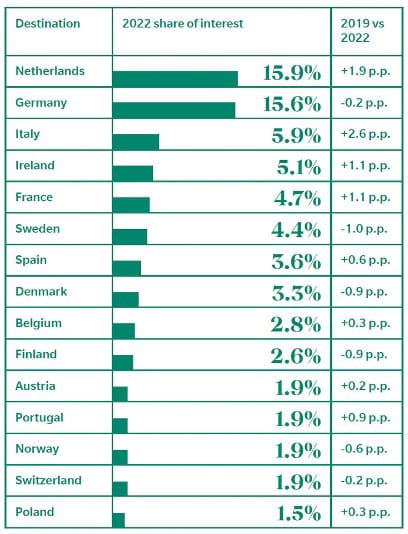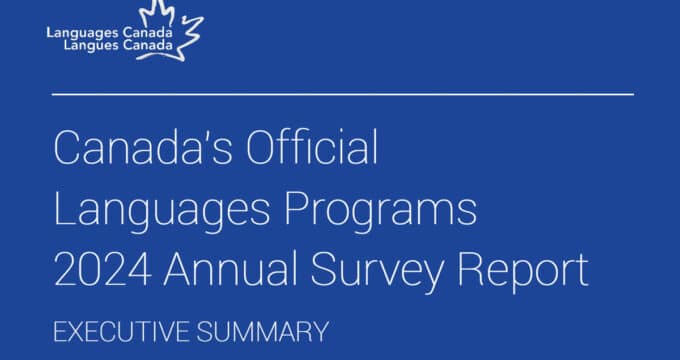Irish universities report significant post-Brexit uptick in EU applications and enrolments
- EU students’ applications to Irish universities have more tripled since Brexit
- The number of EU students aged 23 and under enrolled in Irish universities is up 56.5% since 2019
The UK’s departure from the EU has had many consequences, and among these is that Ireland is picking up share of degree-seeking EU students. According to the Central Applications Office (CAO), the number of applications from EU students to Irish universities reached 6,383 in 2022 – more than triple the number lodged in 2017.
A major draw of the UK in Europe prior to Brexit was that EU students were granted the same tuition fees as domestic students, but Brexit terms ended that opportunity in 2021. This is a major factor in the growing attractiveness of Irish higher education in Europe.
Major growth in EU enrolments as well
EU enrolments in Irish universities are also rising rapidly, as shown in the following chart from the Higher Education Authority (HEA) depicting EU enrolments over time. The blue line represents EU students 23 and under, whereas the red line is students aged 24+. The younger cohort’s enrolments were up 56.5% (to 3,083) in 2021/22 versus 2019/20. The older group contributed 20.4% more enrolments in that same time span.

The next chart depicts non-EU enrolments from countries other than the UK. In this case, 2021/22 enrolments from non-EU students 23 and under are down slightly (-5.7%) from 2019/20, while the older cohort (again, represented by the red line) grew by 11.9% in that two-year timeframe.

Impact of the UK’s Graduate Route
Irish universities may be finding it slightly more challenging to draw students from non-EU markets since 2021, when the UK introduced its Graduate Route (post-study work rights of 2–3 years for degree international students). Since the launch of the Graduate Route, non-EU enrolments in the UK have skyrocketed, and the UK has gained market share of international students relative to other major destinations as a result.
In 2021/22, non-EU enrolments in British universities surged by 23.8% year-over-year, with new, first-year enrolments growing by 32%. By contrast, EU students in UK universities fell by 21.4% – and 53% fewer first-year students came from the EU compared with the previous academic year.
Some experts are cautioning UK universities against relying too heavily on non-EU markets. A recent study from Universities UK International (UUKi) and Studyportals found that the UK is losing share of interest from EU students (as measured by pageviews on Studyportals websites). A good deal of market share is being picked up by Germany and the Netherlands, as you can see in the table below, but Ireland and Italy are also notably more popular than in the past.

Similarly, some of the fastest growing markets for Canadian and US educators are in Europe.
Ireland has the edge in affordability
In Ireland, undergraduate tuition fees for non-EU students range from €9,850–€19,500 for most programmes, for an average of €14,675.
In the UK, the undergraduate range for international students is £11,400–£38,000 (average of £22,200 per year, for a Euro currency equivalent of €24,780). Since 2021, those fees also apply to EU students in British universities.
In Ireland, most undergraduate EU/EEA students enrolled in publicly funded third-level courses do not have to pay tuition fees.
Share of international students jumps
The HEA reports that international students accounted for 12.4% of the overall student population in Ireland in 2021/22, compared with 10.3% in 2020/21. The top three sending countries are the US (14.8% of all international students), India, and China.


















